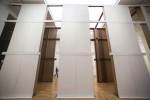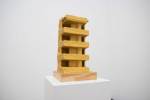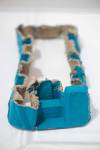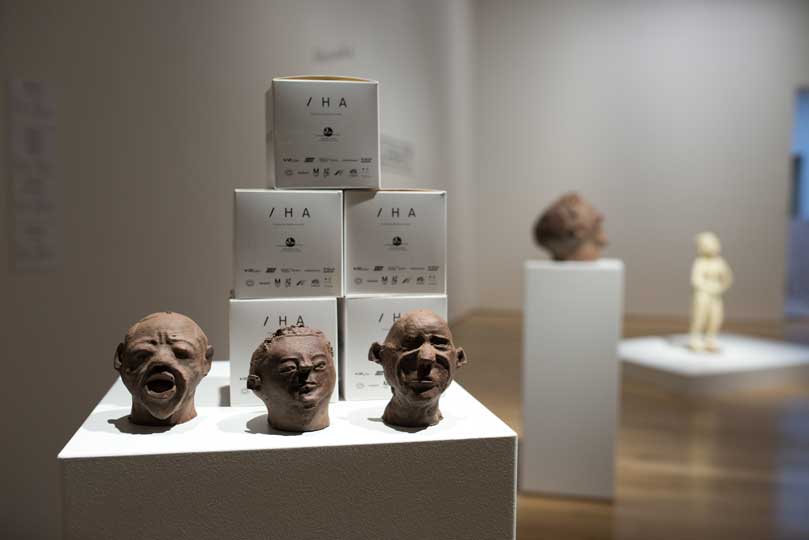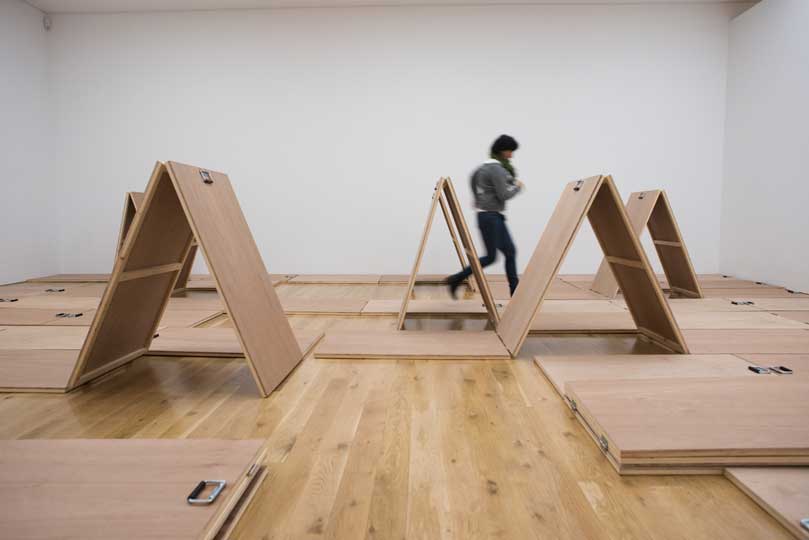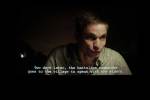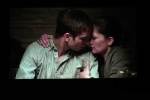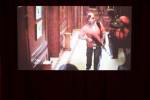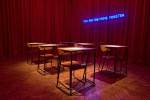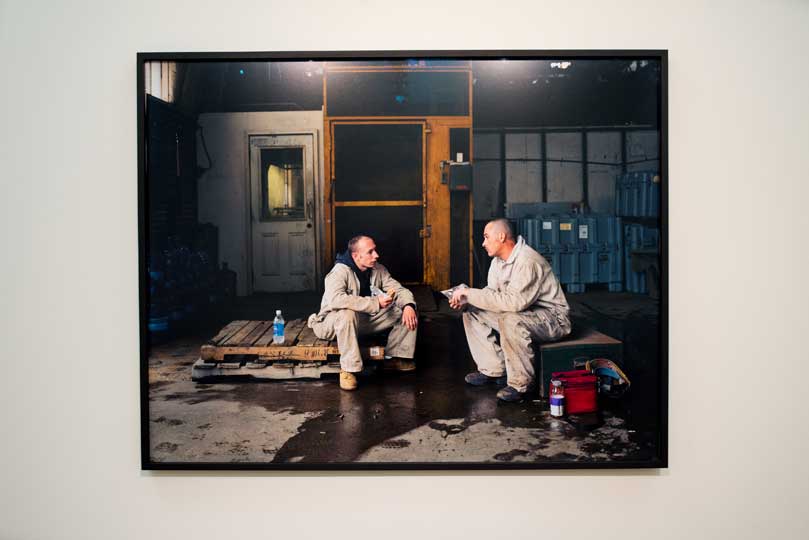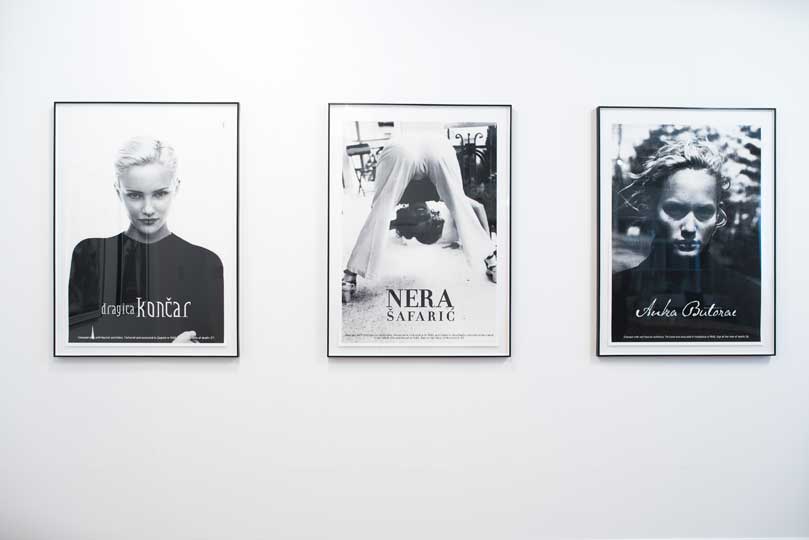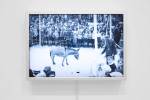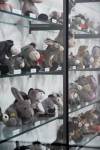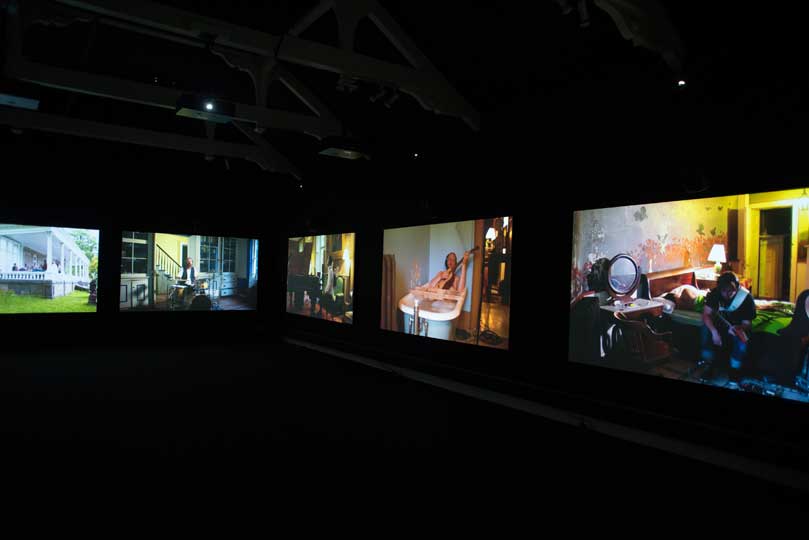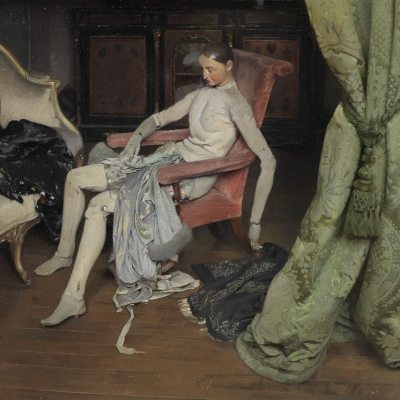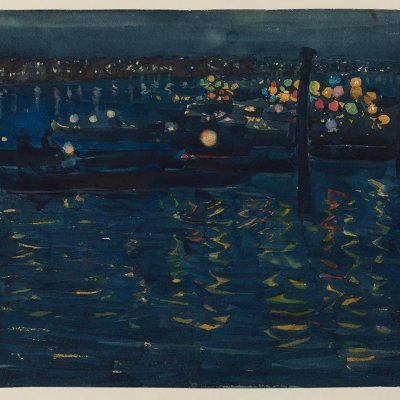The winner of this year’s Artes Mundi Prize is announced in Cardiff on Thursday 22 January. In advance of the prize-giving, we asked director Karen MacKinnon to introduce the work of each shortlisted artist and what it means to her.
This year Artes Mundi has expanded across the Welsh capital city into three core venues – the National Museum Cardiff, Chapter and ffotogallery‘s Turner House Gallery, Penarth. The exhibition includes the work of 10 artists in the form of nine exhibitions (Karen Mirza and Brad Butler work as a duo). The artists use different working methods to raise questions about the human condition in contemporary society.
At the Museum
The first space in the National Museum is moody, loud, and dark. A large projected video shows Theaster Gates and ‘Billy’ singing Amazing Grace. Beside it stands a small, sturdy roof-like structure displaying tiles brought all the way from Dorchester, South Side Chicago where Theaster lives and works. In a corner rests a Boli from Mali, a sculptural bull-like creature made of mud and other organic material, which is used to ward off evil spirits and protect crops. A metallic clatter lures us into an adjoining room where a wooden goat-like creature (with real fur), once used in Masonic rituals, loops around the room on a railway track. This peculiar scene is framed by a 1920s Catholic chart didactically illustrating the rise and status of religions. This surreal collection of objects and the cacophony of Amazing Grace and the railway track suggest some kind of spiritual face-off between dogmatic religious ideology and alternative belief systems. The title couldn’t be more appropriate: A Complicated Relationship between Heaven and Earth or When We Believe.
From Theaster’s space we can see Carlos Bunga’s towering cardboard pillars which were created as part of his work Exodus. Bare card and packing tape line their insides, and outside the walls are painted white. The brushstrokes, cracked paint and drips are intentional and I must say, beautiful. They belong to the structure like details on a magnificent abstract painting. The installation also includes drawings of androgynous bodies with buildings coming out of their heads; small architectural structures also made of cardboard, covered in luminous gold and aquamarine paint; and cardboard box paintings of the brightest yellow. This is a dreamlike landscape where painting, architecture and body exist as one. The title Exodus suggests a diaspora moving through unknown lands, its buildings destroyed and reconstructed, revealing the constant flux of civilisation, its impermanence and mortality.
Upstairs the seductive aroma of chocolate announces Renzo Martens’ work with the Institute for Human Activities. A series of chocolate sculptures rest on white plinths – these full body figures and busts were originally made by Congolese plantation workers, and then rendered into 3D models using the highest quality Belgian chocolate.
Blended into these chocolate artworks are centuries-worth of tensions between the developed and underdeveloped world, between those who inspire and produce art and those who profit from it. The workers who made the cocoa earn a pittance and live in squalid conditions; mortality rates are high and one in every three children die as babies or toddlers. During a breakfast meeting Renzo said to me ‘everything on this table comes from there (the Congo)…coffee, chocolate, palm oil in pretty much everything…our privilege depends on their poverty’ but we know this, right? Over the coming years Renzo will work in the Congo as director of the Institute for Human Activities, which has introduced an art centre, seminars and education programmes to generate wealth. With this he sets the question – if art in the west can be used to kickstart local economies, then why not do the same in the Congo? This is a complex and provocative question. To understand this project more fully, visitors can stop at Chapter to watch one of Renzo Martens’ earlier pieces: Episode III (Enjoy Poverty). The film provocatively shows Renzo as a narcissistic, white journalist in the Congo who instructs a group of young local men how to better exploit their only resource: poverty.
In the next exhibition space the floor is covered in plywood boards with handles. Columns of two, three and four plywood pieces have been joined together with hinges allowing us to move sections of the floor, to fold it over, create ramps, move it to one side, flatten it, and create paths through it. Falha is a playful and provocative work, which challenges the museum space and the way it dictates our movements, and therefore how we view art. The artist rejects the idea of passive enjoyment and instead asks us to rearrange the space. Renata Lucas’s work is disruptive and noisy. It challenges health and safety rules and regulations, but it also challenges us. It is fascinating to watch how people react to this deceptively simple piece.
After clambering across Renata’s work we come to the final space at the museum – a dark high-ceilinged roomed housing the single-screen film Continuity. Continuity tells the story of an upper middle class German couple and their son. We see the parents meeting a young man wearing army clothes at a train station. They hug, take him home, prepare a special meal– a scene of reunion we have seen and enjoyed in numerous films before. But this is just the start of a repetitive cycle that quickly involves us in its murky, psychosexual tensions. We see the parents returning to the train station and picking up a different young man. The couple’s behaviour becomes increasingly strange; the mother’s gentle touch turns inappropriate and intrusive, while the father collaborates in the strange scenario. Beautifully made and compelling, this work pulls us seductively into a world where all is not what it seems, a world populated with loss, trauma, violence and the coping strategies we subsequently create.
At CHAPTER
Inside Chapter’s busy café is a series of large-scale posters of Meryl Streep as Margaret Thatcher in The Iron Lady. ‘I killed the British working class’ is scrawled across them, and a Hitler moustache scribbled on her face. At first this may seem like a one-liner critique of Thatcher, but when we see Karen Mirza and Brad Butler’s remaining works it becomes evident that the posters are part of a much broader conversation – about living in a world in which we are completely overwhelmed by information, where the lines between fiction and truth are blurred and disempowering.
In The Unreliable Narrator a real conversation between a terrorist group controller and a suicide bomber during the recent attacks in Mumbai is translated on a two-screen film installation. This dark and disturbing narrative is intercut with CCTV footage and scenes from a Bollywood film about the bombings made not long after the event. This makes me think of the posters outside, and poses the question: do we really know the difference between what is real and what is fiction anymore, when everything is turned swiftly into entertainment and reality TV?
In the artists’ installation next door a neon sign that reads ‘You are the Prime Minister’ hangs over six school desks. On top of each rests a single piece of paper, which turns out to be a scholarship exam for 13-year-old boys entering the elite Eton College. The exam question introduces a ‘riot scenario’ precipitated by an oil crisis; the army has been sent in, and the teenagers are asked to write a speech justifying their use of force to restore ‘normality’. Power and privilege are clearly evident in our society, its class systems firmly in place: Mirza and Butler expose this fact in their work.
Sharon Lockhart’s space is quiet and contemplative. A series of beautiful photographs depict factory workers having lunch, talking and working together. Other photographs focus on the workers’ lunch boxes and locker doors which have writing, stickers, football team badges; they reveal the political alliances, hobbies, beliefs, and the markings of each individual. Miners’ badges, exit tokens and other objects from the South Wales Valleys are also included in the installation, reminding us of our own industrial past. In another room we see EXIT, a slow meditative work, neither film nor documentary, that depicts workers as they leave the Bath Iron Works in Maine. The siren that marks the end of each working day is so loud it disturbs the silence of the installation, shifting our attention from each individual and their idiosyncrasies to their identity as a working group. There are many connections and overlapping themes between the works of Mirza & Butler and Sharon Lockhart.
At Ffotogallery
In the ground floor space at Ffotogallery we are faced with six photographic works depicting young female models, among them the beautiful Linda Evangelista who drags on a cigarette. Trained as a graphic designer, the artist Sanja Iveković has appropriated these glossy magazine images, taken off all branding and labelled them instead with them names of young women who fought against the Nazis. As you would imagine, the copy tells us that these young women were often tortured or worse. One of them is the artist’s mother, who spent four years in Auschwitz.
These brave young women have been written out of history: Sanja writes them back in. Capitalist advertisements objectify and sell women’s beauty: Sanja flips this approach on its head. These are real stories from real women from all over the world, and are connected to a broader context of poverty, dictatorship and political and cultural violence. The personal is political. In The Disobedient a Nazi soldier stands by a donkey surrounded by a barbed wire fence. He warns the bystanders – children, adults, frightened, bemused, so many expressions – that this is what will happen to them if they continue to buy from Jews. When we turn from this dark and frightening newspaper image, we see a glass cabinet full of children’s toy donkeys of all shapes and sizes. These are The Disobedients, and they have been given name tags: Rosa Luxemburg, Nelson Mandela, the Mirabal Sisters and many more who opposed repressive regimes. This is an uplifting and empowering work about resistance and revolution. On Friday and Saturdays Sanja’s short film Lighthouse plays in a small, intimate cinema at Penarth Pier Pavilion.
Whilst viewing Sanja’s work, music drifts in from upstairs, where Ragnar Kjartansson’s multi-screened film installation The Visitors plays on and on. Eight screens show the artist and seven of his musician friends playing instruments and singing: each of them is filmed in a separate room of a bohemian mansion in the Hudson Valley. A ninth screen shows the group on the patio outside the beautifully decadent house.
‘Once again I fall into my feminine ways’. The song’s lyrics were taken from a poem written by the artist’s ex-wife, and this absorbing chorus, intertwined with the carefully staged footage, is deeply moving. Like many of Ragnar’s works, The Visitors is built around repetition and duration. Each musician performs the song over and over, until reaching a trance-like state which viewers also experience, each of us deeply alone but also connected. This is an existential and unashamedly romantic work.
The Artes Mundi 6 Exhibition is open in Cardiff until 22 February 2015. The Prize winner will be announced on 22 January.
Who do you think should win this year’s prize? Let us know in the comments…


